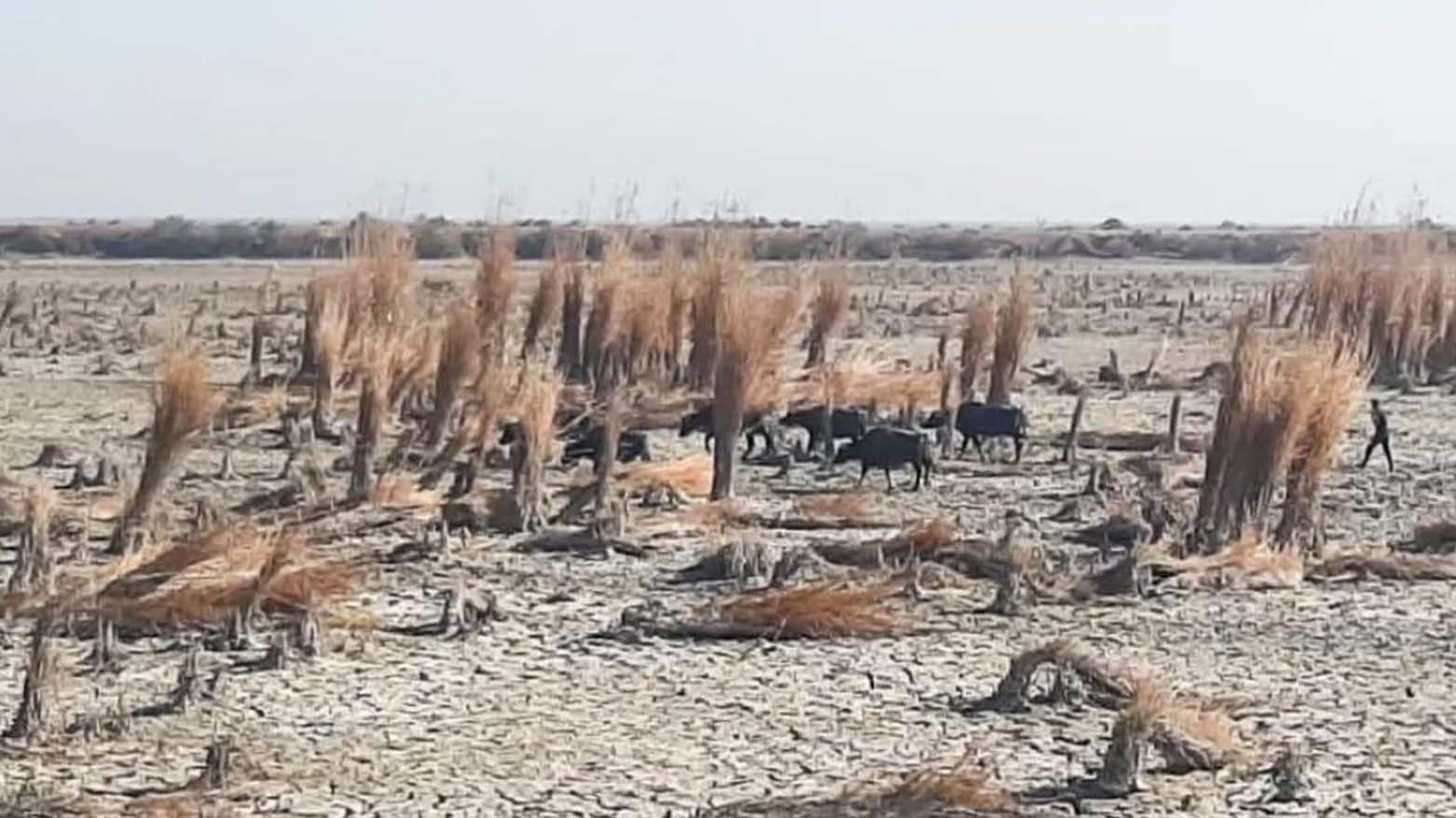Southern Iraq’s Marshes Face Severe Water Crisis, Forcing Residents to Flee
The Hawizeh Marshes—one of the largest and most vital wetland systems in southern Iraq—are experiencing acute water shortages that residents say have destroyed their livelihoods and endangered their survival.

ERBIL (Kurdistan24) – The marshes of southern Iraq are grappling with a devastating water crisis that has persisted for more than three months, inflicting heavy damage on local communities, their livestock, and the fragile ecosystem.
The Hawizeh Marshes—one of the largest and most vital wetland systems in southern Iraq—are experiencing acute water shortages that residents say have destroyed their livelihoods and endangered their survival. The crisis has particularly affected water buffalo, a cornerstone of the local economy and daily life in surrounding villages.
Residents told Iraqi media that the disaster is fueled not only by drought and the impact of climate change but also by what they described as government indifference and lack of action. They accuse both the federal and local authorities of negligence, saying no serious measures have been taken to ease their suffering.
“Dozens of water buffalo are dying every day,” one resident said, adding that the government bears responsibility for the ongoing losses, which they described as a form of “genocide.” Local sources estimate that hundreds of thousands of buffalo are at risk, with many already suffering from untreated diseases.
The economic fallout is severe. The price of a water buffalo has collapsed, falling from five million dinars to around one and a half million dinars, causing devastating financial losses for owners who depend on them for survival.
With conditions deteriorating, mass displacement is underway. Families are leaving their homes in search of drinking water, arable land, and grazing pastures. Residents are urgently calling on the Iraqi government, ministries, and relevant authorities to step in before the crisis deepens further.
They warn that without swift intervention, the crisis will not only destroy the marshes and their communities but also trigger wider economic consequences across Iraq.
The Hawizeh Marshes, straddling the Iraq-Iran border, are part of the larger Mesopotamian Marshes—an ancient ecosystem often referred to as the “Venice of the Middle East.” These wetlands were once among the largest in the world, sustaining unique biodiversity and providing livelihoods for thousands of Marsh Arabs who rely on fishing, buffalo breeding, and reed gathering.
In the 1990s, the marshes suffered near-total destruction when Saddam Hussein’s regime drained large areas to punish rebellious communities, leading to mass displacements. After 2003, efforts were made to restore the wetlands, and UNESCO designated the marshes a World Heritage Site in 2016. However, recurring droughts, upstream dam projects on the Tigris and Euphrates rivers, and inadequate water management policies have left the marshes increasingly vulnerable.
Today, climate change and water scarcity are once again pushing the marshes and their people to the brink of collapse, raising fears of permanent ecological loss and cultural erosion.